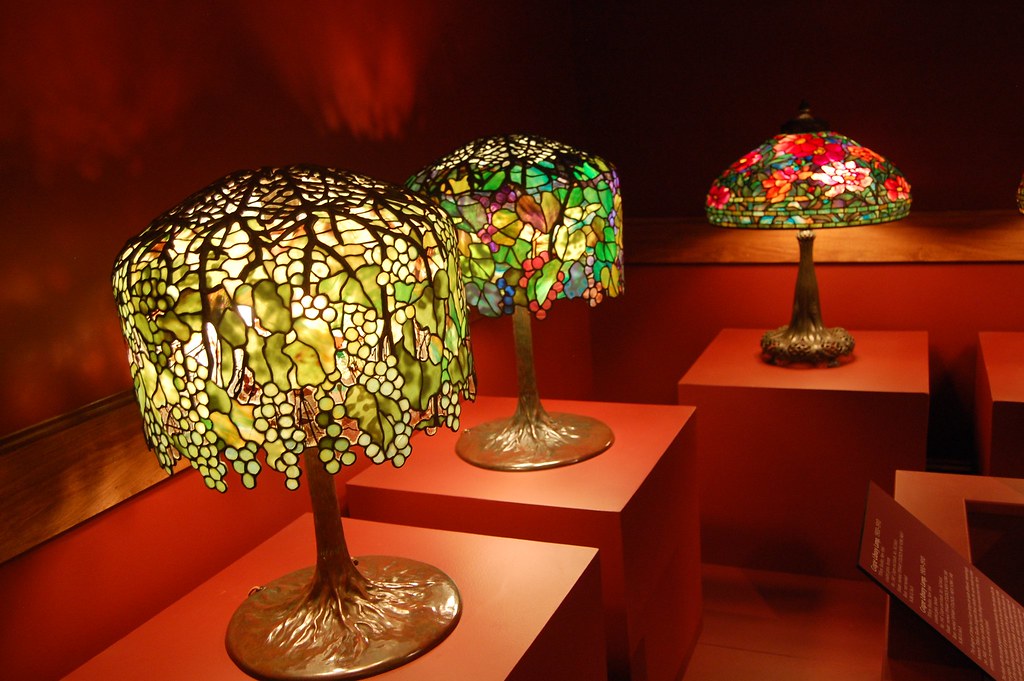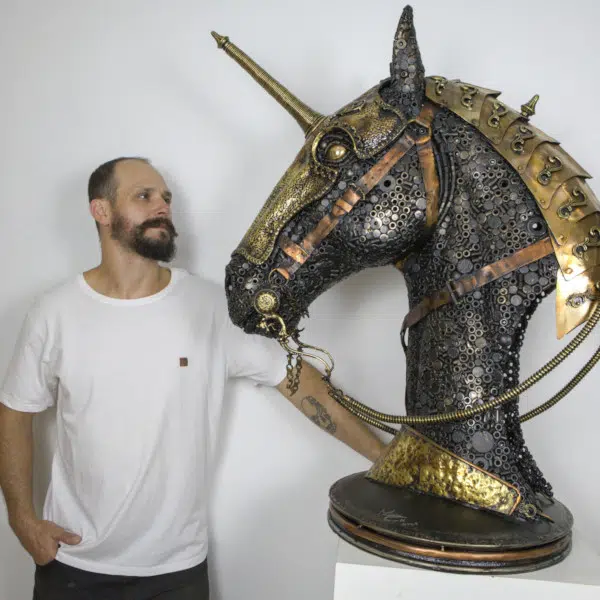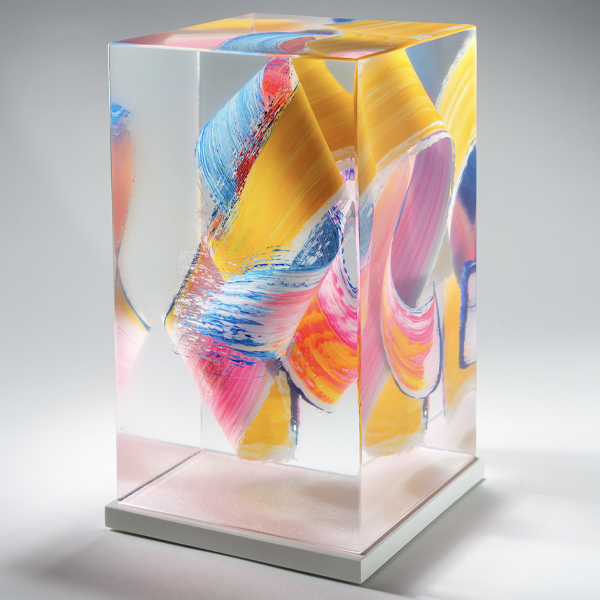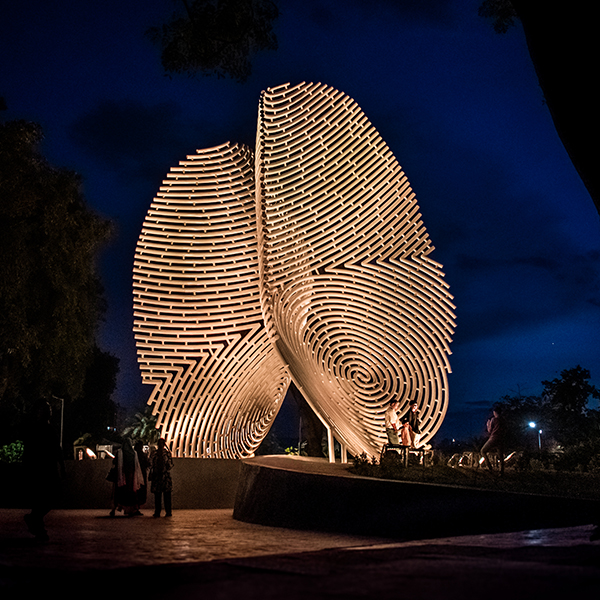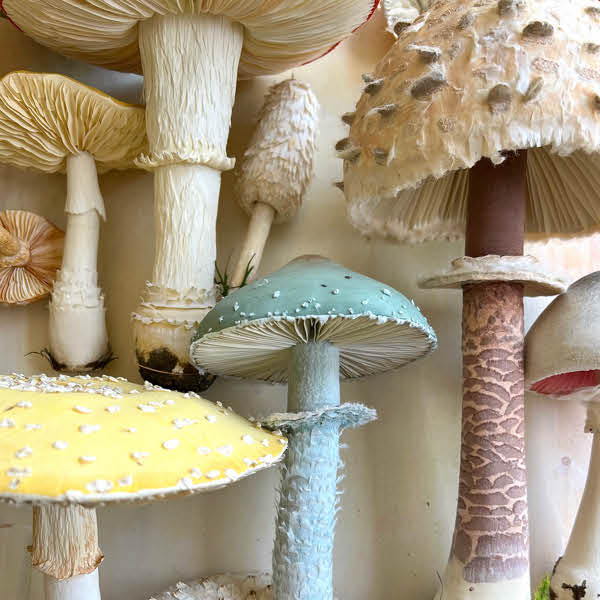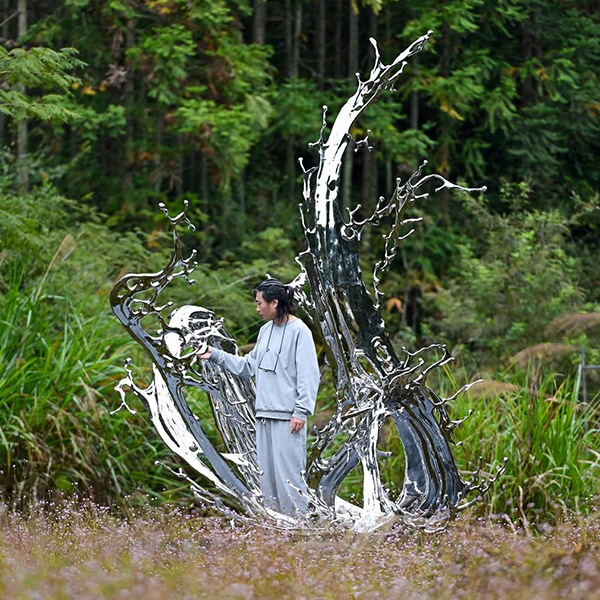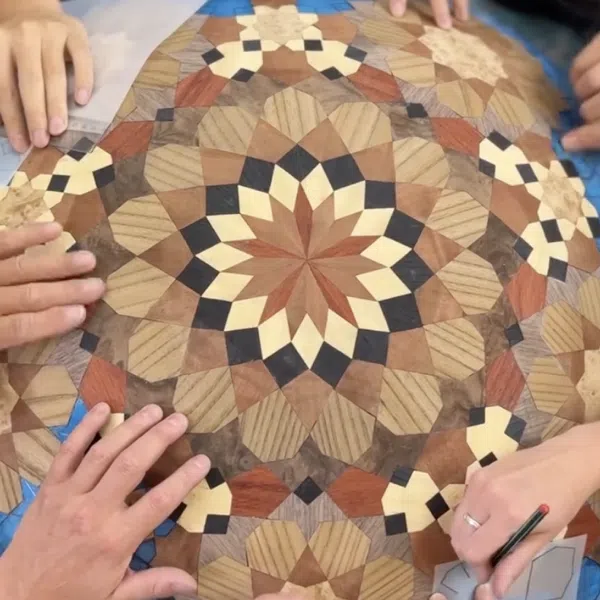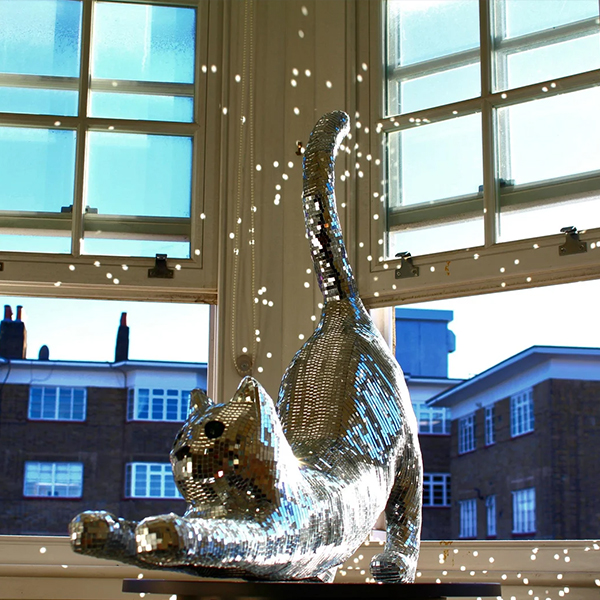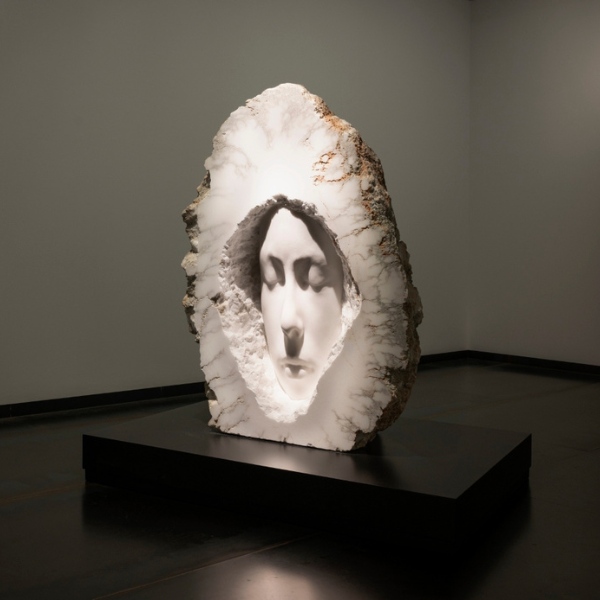
Photo: Stock Photos from Stefan Malloch /Shutterstock
How does a glass bowl get formed or an exquisite sculpture get made? This is done through the art of glassblowing. The practice involves shaping the material using heat and, as the term implies, blowing. It’s a relatively simple act that has the power to create awe-inspiring art that can be functional, decorative, or both.
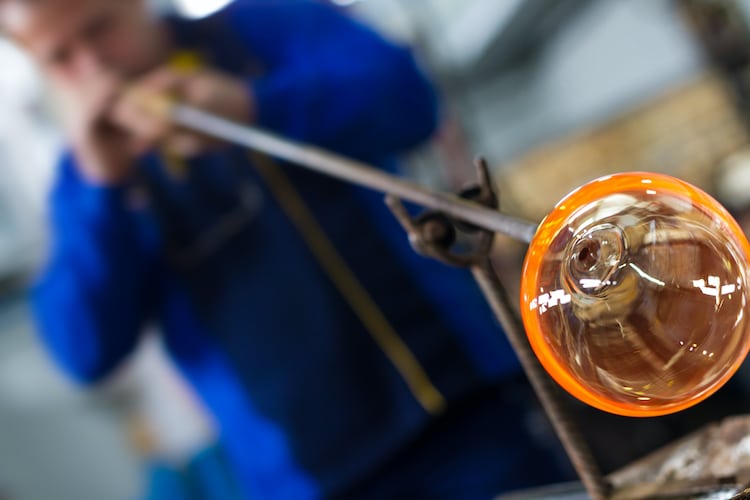
Photo: Stock Photos from maggee /Shutterstock
The techniques used in glassblowing have remained nearly the same since it was first discovered. It involves molten glass (glass with the consistency of molasses) that is gathered at the end of a hollow pipe. Air is then blown through that pipe and the pliable glass blooms into a bubble form. From there, it’s shaped by swinging, rolling, or blowing. Afterward, additional elements that would make the glass functional (think handles or stems) are attached using welding.
History of Glassblowing
Ancient Eras
View this post on Instagram
Humans working with glass can be traced back to the prehistoric times of 4000 BCE. Men had not discovered glass blowing at that time, but they did take advantage of the natural glass called obsidian that was the result of volcanic eruptions. The hardened material was used in making tools, arrowheads, and amulets. At this time, humans also figured out the recipe for glass: sand, plant ash, and lime. The plant ash helped the sand to melt and the lime was a stabilizer that protected the material from moisture.
By 1500 BCE, people in Mesopotamia and Egypt shaped their own vessels by forming hot glass around solid cores and dung. After the glass cooled, the cores were removed to reveal a hollow form. In addition to making bowls, glass tiles were also created at this time.
Roman Empire
We have the Syrian people to thank for the invention of the blowpipe. Around 300 BCE, they created the tool for which modern glassblowing is built upon. It caught on with the rest of the Roman Empire and they began experimenting with the practice by inventing new shapes and forms. The artisans also improved upon the basic glass formula to create designs within the material and decorate it using metal inlays.
Middle Ages
View this post on Instagram
The best glassblowers were in the Middle East and their secrets for how they produced glass were heavily guarded. During the Middle Ages, however, Italy—specifically Venice—became the mecca for glassblowing as the process was revealed through trade between the two places. The Italian government then forced all of the glassblowers to Murano island around 1300 CE. There, they perfected their craft and developed cristalo, a clear glass. They also produced new colors.
It was a huge risk for glass blowers to leave Murano—the act was punishable by death. But many succeeded in escaping and took their techniques to other parts of Europe and Asia.
Renaissance
View this post on Instagram
The Renaissance is when glassblowing became more widespread and was developed throughout Europe. In the 17th century, you could get a textbook on the subject called Arte Vetraria or The Art of Glass. During this time, more practical uses of glass began to emerge that still exist today, like window panes and glass bottles.
Art Nouveau
Art Nouveau, the artistic movement that was popular at the end of the 17th century and into the 18th century, was where we saw the development of art and mass fabrication. Louis Comfort Tiffany was working during this time and designing iconic lamps, stained glass windows, and more.
Mid-Century to Present
View this post on Instagram
The middle of the 20th century saw the rise of glass studios and artists who were working independently of large factories to produce their own creative pieces. In doing so, the techniques and approaches used in glassblowing have been both refined and new ones invented.
Contemporary Glassblowing Artists You Should Know
Want to learn more about contemporary glassblowing? Here are artists whose amazing works blow us away.
Dale Chihuly
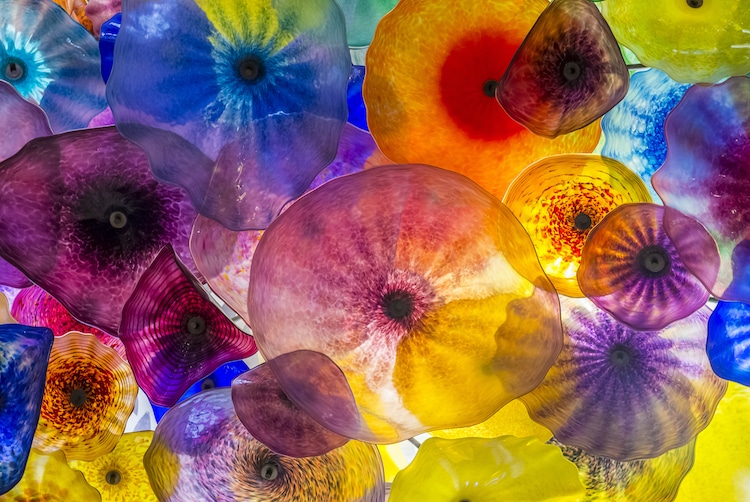
Stock Photos from Kobby Dagan /Shutterstock
When you think of contemporary glass art, Dale Chihuly might come to mind. The internationally renowned glassblower changed the way we think about glass art. Traditional glass production prided symmetry and perfection, but Chihuly opted for creating organic shapes using gravity and centrifugal force. His floral motifs are beautiful explosions of color and texture, and they grace locales across the world—including his own museum in Seattle.
William Morris
View this post on Instagram
William Morris worked with Chihuly in his studio for about 10 years until he decided to strike out on his own. And it’s a good thing he did; for more than 25 years, he has created pieces that resemble stone carvings from ancient cultures, but they are all made of blown glass.
Flavie Audi
View this post on Instagram
Glass plays a pivotal role in how Flaviue Audi imagines a future world. Her pieces are colorful blobs that utilize the transparent nature of the material to create works that are both tangible yet so sublime you might think that they just exist in a far-off virtual land.
Cathryn Shilling
View this post on Instagram
Calling her work “woven glass,” artist Cathryn Shilling makes delicate textiles out of glass cane pieces. Once those are formed, fire and heat wrap them around blown figures. For Shilling, this artistic path was forged after spinal surgery left her unable to perform certain activities in her studio. But in finding new ways to work, she has produced these striking pieces that have earned her many accolades.
Rick Satava
View this post on Instagram
Artist Rick Satava creates the splendor of the sea in a blown glass form. His jellyfish represent some of his most iconic pieces, and their multi-colored tentacles look as though they’ve been frozen in time.
Deborah Czeresko
View this post on Instagram
Hungry? Deborah Czeresko uses blown glass and metal armatures to create Meat Chandelier featuring the likes of salami, chops, and more. The pieces feature a striped Venetian technique popular in glasswork.
Verhoeven Twins
View this post on Instagram
Brothers Jeroen and Joep Verhoeven blow bubbles of a different kind. Using the same material that scientific beakers and baking dishes are made of, they form delicate iridescent bubbles.
Austin Stern
View this post on Instagram
Toys are meant to be played with, but you’d never say the same of glass. This, however, is precisely what influences Austin Stern in his glasswork. “I am inspired by the bright and highly saturated colors found in the toys and cartoons of my childhood, and the patterns found in both nature and the world of fashion,” he writes. “ My current work explores interpersonal relationships, and mental health. The ways in which we support each other, take care of ourselves, and how we cope with various anxieties and fears are all concepts my work explores through a cheerful lens of brightly colored playful creatures.”
Related Articles:
Interview: Former Boat Builder Translates His Love of the Ocean into Stunning Glass Sculptures
Stained Glass: The Splendid History of an Ancient Art Form That Still Dazzles Today
8 Contemporary Glass Artists Who Shatter the Boundaries of the Craft

